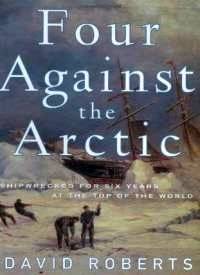In "Four Against the Arctic" Roberts shares the remarkable story that he discovered, perhaps the most amazing survival tale ever recorded.In 1743 a Russian ship bound for Arctic walrus-hunting grounds was blown off course and trapped in ice off the coast of Svalbard (Spitzbergen). Four sailors went ashore with only two days' supplies to look for an abandoned hut they knew about on the island. They found it and returned to tell their shipmates the good news, only to find that their ship had vanished, apparently crushed and sunk by the ice.The men survived more than six years until another ship blown off course rescued them.
During that time they made a bow and arrows from driftwood (Svalbard has no trees) and killed nine polar bears in self-defense. They survived largely on reindeer meat, killing 250 of the animals during their ordeal.Fascinated as he was by this remarkable story, Roberts wondered how it had dwindled into obscurity. For two years he researched the tale in libraries and archives in the United States, France, and Russia. In Russia he traveled to the sailors' hometown, where he met the last survivors of their families, who knew the story from an oral tradition passed down for more than 250 years.
Finally, with three companions he organized an expedition to the barren island of Edgeoya insoutheast Svalbard, where he spent three weeks looking for remnants of the sailors' lost hut and walking the shores while pondering the men's astonishing survival."Four Against the Arctic" is a riveting book about man versus nature and a delightfully engaging journey deep into an obsession with historical rediscovery. But it is more even than that: It is a meditation on the genius of survival against impossible odds that makes a story so inspirational that it still fires the imagination centuries later.



